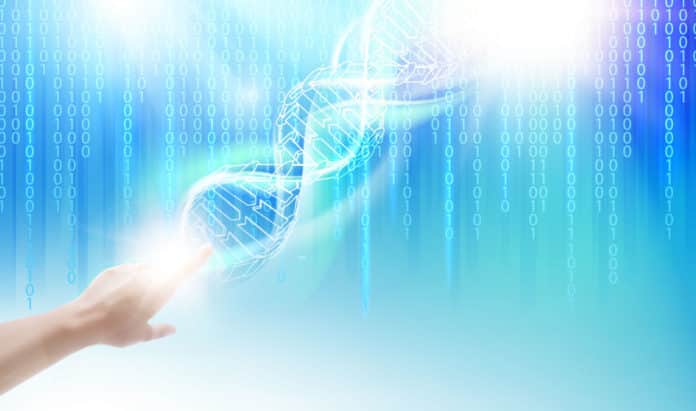World’s First Fully Automated DNA Data Storage System
Researchers from the University of Washington and Microsoft have demonstrated the first fully automated system to store and recover data in manufactured DNA–a key step in moving the novel tech out of the research lab and into the commercial data-information centers.
The research team successfully encoded the word “hello” in snippets of fabricated DNA and converted it back to digital information using a fully automated end-to-end system.
The findings of the study are explained in a new paper published on March 21 at Nature Scientific Reports.
DNA can save digital information at a place that’s orders of magnitude smaller than data centers use now. It’s one promising option for storing the exploding amount of information the world generates each day, from company records and cute animal videos to medical scans and pictures from outer space.
The team in the UW and Microsoft is investigatin
g ways to close a gap between the number of information we are generating that needs to be maintained and our capacity to keep it. Including developing algorithms and molecular computing technologies to encode and retrieve information in manufactured DNA, which might fit all the information now stored in a warehouse-sized data center to space roughly the size of a few board game dice.
“To accomplish this, we needed to prove that this is practical from an automation perspective.”
Lead author Chris Takahashi, a senior research scientist in the Allen school said, “Information is stored in artificial DNA molecules generated in a lab, maybe not DNA from humans or other living beings, and may be encrypted before it is sent to the machine. While sophisticated machines such as synthesizers and sequencers already function crucial areas of the process, many of the intermediate steps until today have required manual labour in the research laboratory. But that wouldn’t be viable in a commercial setting,”.
“You can not have a bunch of people running a data center with pipettes–it is too prone to human error, it’s too costly and the footprint would be too big,” he said.
For the technique to make sense as an industrial storage alternative, costs need to decrease for both synthesizing DNA–essentially custom-building strands with purposeful sequences–and the sequencing procedure which extracts the saved data. Trends are moving rapidly in that direction, researchers say.
As per the team, Automation will enable storage at commercial scale and will make the tech more affordable.
Automation is another key piece of that puzzle, as it would enable storage at a commercial scale and make it even more affordable, the staff says.
Under the ideal conditions, DNA can last considerably longer than current archival storage technology that degrade in a matter of decades. Some DNA has managed to last in less than ideal storage conditions for tens of thousands of years in mammoth tusks and bones of ancient people, and it should have relevancy as long as people are living.
The automated DNA data storage system consists of software developed by the team that converts the ones and zeros of digital data to the As, Ts, Cs, and Gs. Subsequently, it uses inexpensive, largely off-the-shelf lab equipment to stream the necessary fluids and compounds into a synthesizer that builds fabricated snippets of DNA then pushes them into a storage vessel.
After the system needs to recover the information, it adds additional compounds to properly prepare the DNA and uses microfluidic pumps to push the liquids into a machine which”reads” the DNA sequences and converts it back to information that a computer can comprehend. The intention of the project wasn’t to prove how quickly or the system could work, researchers say, but only to show automation is possible.
One immediate benefit of having an automatic DNA storage system is the fact that it frees up researchers to probe deeper questions, instead of spending time looking for bottles of reagents or repetitively squeezing drops of fluids into test tubes.
“Having an automated method to do exactly the repetitive work allows those people working in the laboratory to take a higher view and start to build new strategies–to innovate much faster,” explained Microsoft researcher Bichlien Nguyen.
UW’s Molecular Information Systems Lab research team has already demonstrated the ability to store cat photos literary works, pop videos, and archival recordings in DNA, and retrieve those files without mistakes in a research setting. Till date they’ve been able to store 1 GB of data in DNA, breaking their previous world record of 200 MB.
The researchers also have developed methods to execute meaningful computation–like searching for and retrieving only images that contain an apple or a green bicycle–utilizing the molecules themselves and without needing to convert the documents into a digital format.
“We’re certainly seeing a new kind of computer program being created here where you’re using molecules to store data and electronics for control and processing. Putting them together holds some very interesting possibilities for your near future,” said UW Allen School professor Luis Ceze.
Unlike silicon-based computing systems, DNA-based storage and computing systems need to utilize fluids to move atoms around. But fluids are inherently different than electrons and also require completely new engineering solutions.
The researchers are developing a programmable system which automates laboratory experiments by harnessing the properties of water and electricity to move droplets around to a grid of electrodes. The complete stack of hardware and software, nicknamed”Puddle” and”PurpleDrop,” can mix, separate, heat or cool different liquids and operate lab protocols.
The target is to automate lab experiments which are presently being performed by hand or from expensive liquid handling robots–except for a fraction of the cost.
Next steps for the team include incorporating the easy end-to-end automatic system with technology like PurpleDrop and those that enable searching with DNA molecules.






























